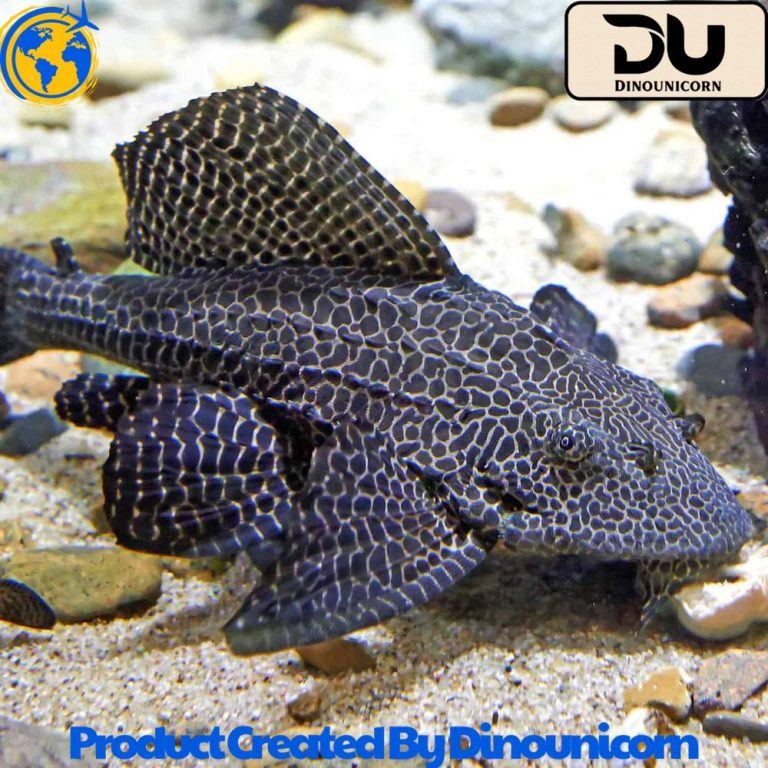Blog
How Old Are Cleaner Fish?
How Old Are Cleaner Fish? A Deep Dive into Their Lifespan, Growth, and Biology
Introduction: Understanding Cleaner Fish and Their Lifespan
Cleaner fish play a crucial role in marine ecosystems, especially in reef environments. These small but fascinating creatures, such as the cleaner wrasse (Labroides dimidiatus), are known for their unique behavior—cleaning parasites off other fish. Their lifespan, maturity, and growth are important factors that contribute to their role in the ecosystem and their welfare, both in the wild and in aquarium settings. In this article, we explore how old cleaner fish can get, their lifespan, development stages, and the factors that affect their longevity.
What Are Cleaner Fish?
Overview of Cleaner Fish Species
Cleaner fish are a diverse group of species that participate in cleaning stations in the ocean. These stations are areas where fish gather to have parasites and dead skin removed by cleaner fish. The cleaner wrasse, such as Labroides dimidiatus, is one of the most well-known species. Other species, like Hawaiian cleaner wrasses, also serve similar functions in their native habitats. Cleaner fish are commonly found in tropical and subtropical waters, especially in coral reefs, where their cleaning behavior contributes significantly to the health of the ecosystem.
The Role of Cleaner Fish in the Ecosystem
Cleaner fish maintain the health of other marine species by removing parasites from larger fish. This symbiotic relationship benefits both parties: the cleaner fish receive food (the parasites), and the host fish get rid of harmful organisms. In reef ecosystems, the cleaner fish contribute to maintaining a balanced environment by helping to control parasite populations.
How Old Can Cleaner Fish Get?
Average Lifespan of Cleaner Fish
The lifespan of cleaner fish varies by species and environmental factors. On average, cleaner fish live between 5 to 10 years in the wild. For example, cleaner wrasses, like Labroides dimidiatus, typically have a lifespan of about 6 years. However, the age of cleaner fish can vary greatly depending on factors like habitat, food availability, and environmental conditions. In aquarium settings, cleaner fish may live longer, with proper care and stable water conditions.
Maximum Age of Cleaner Fish
The maximum age cleaner fish can reach is influenced by several factors, including their environment and the species in question. For example, the wrasse lifespan may reach up to 12 years in some cases, though it is rare for them to live this long in the wild. Cleaner fish, such as Pacific cleaner wrasses, have been reported to live longer when placed in controlled aquarium environments, where they are protected from predators and have consistent access to food.

Cleaner Fish in the Wild vs. Captivity
How Long Do Cleaner Fish Live in the Wild?
In the wild, the lifespan of cleaner fish is often shorter due to natural predators and fluctuating environmental conditions. For example, cleaner fishes in coral reefs may face threats from larger fish, competition, and changes in water temperature. These factors contribute to a shorter lifespan for these creatures, generally between 5 to 8 years.
Age and Lifespan of Cleaner Fish in Aquariums
In aquarium settings, cleaner fish tend to live longer. With proper care, the age of cleaner fish can extend beyond their typical lifespan in the wild. Well-maintained tanks provide stable water quality and food sources, which are crucial for enhancing the longevity of these fish. Additionally, the absence of predators allows for a longer life, with some cleaner fish reaching up to 12 years or more in captivity.
Cleaner Fish Growth and Development Stages
From Juvenile to Adult: The Life Stages of Cleaner Fish
Cleaner fish undergo several stages of development as they grow from juveniles into fully mature adults. During their early years, they focus on growing and adapting to their environment. As they mature, cleaner fish begin to establish cleaning stations and engage in their symbiotic behavior with other fish. The growth of cleaner fish is closely tied to their access to food and the availability of suitable cleaning partners.
How Old Are Cleaner Fish When They Reach Maturity?
Most cleaner fish species, including the cleaner wrasse, reach sexual maturity between 2 to 3 years. At this stage, they start to participate in cleaning activities, removing parasites from larger fish. The maturity of cleaner fish is crucial for their survival and continued role in the ecosystem. Their ability to reproduce also plays a key role in sustaining their populations in the wild.
Lifespan of Different Cleaner Fish Species
Age Range of Common Cleaner Fish Species
The age range of cleaner fish can differ between species. For example, the Hawaiian cleaner wrasse may live up to 10 years, while the Pacific cleaner species often have shorter lifespans, ranging between 5 to 7 years. The age of cleaning fish can also vary depending on the ecological pressures they face, including food availability and predation risk.
Factors Affecting the Lifespan of Cleaner Fish
Several factors influence the life expectancy of cleaner fish. Key factors include:
- Environmental conditions: Clean water and stable temperatures promote longer lifespans.
- Food availability: A steady source of parasites to clean allows cleaner fish to thrive.
- Predation: The presence of natural predators can reduce the lifespan of cleaner fish.
- Habitat: Fish living in reef ecosystems with abundant resources tend to live longer than those in less favorable environments.
Conclusion: Why Understanding Cleaner Fish Age Matters
Understanding the age of cleaner fish is important for various reasons, including their role in the ecosystem, their welfare in aquarium settings, and the broader implications for marine conservation efforts. By studying the lifespan of cleaner fish and the factors that influence their longevity, we can better care for them in captivity and ensure that they continue to play an essential role in maintaining healthy marine ecosystems. Cleaner fish, such as the cleaner wrasse, are vital members of the reef ecosystem, and understanding their age and growth patterns is key to preserving their populations.

Frequently Asked Questions (FAQs)
1. How long do cleaner fish live in the wild?
Cleaner fish typically live between 5 to 8 years in the wild, depending on their species and environmental conditions.
2. What is the lifespan of cleaner wrasse?
The cleaner wrasse (Labroides dimidiatus) generally lives for about 6 years, though it can live longer in controlled environments like aquariums.
3. How old are cleaner fish when they reach maturity?
Cleaner fish, including the cleaner wrasse, typically reach sexual maturity at around 2 to 3 years of age.
4. Can cleaner fish live longer in an aquarium?
Yes, cleaner fish often live longer in aquariums due to the controlled environment, lack of predators, and stable food sources. They can live up to 12 years in captivity.
5. What factors affect the lifespan of cleaner fish?
The lifespan of cleaner fish is influenced by environmental factors, food availability, predation risk, and whether they live in the wild or in an aquarium.
6. How old can cleaner fish get?
The maximum age of cleaner fish varies by species, with some, like the cleaner wrasse, reaching up to 10 years in ideal conditions.
7. What is the role of cleaner fish in the reef ecosystem?
Cleaner fish, such as the cleaner wrasse, play a vital role in maintaining the health of the reef ecosystem by cleaning parasites off other fish.
 Skip to content
Skip to content

